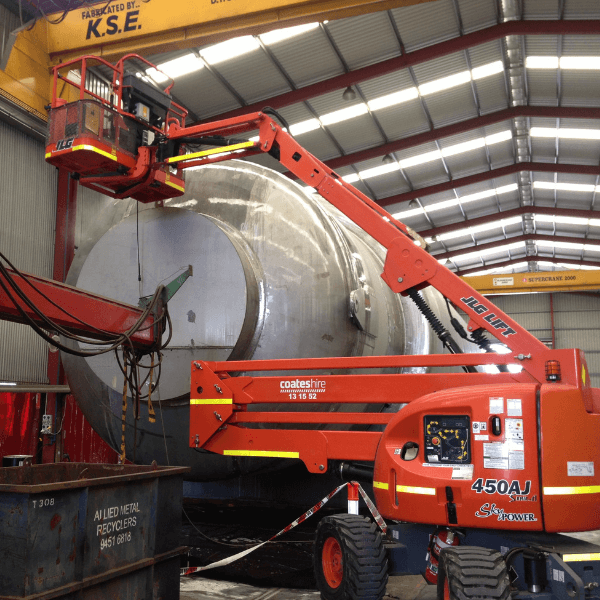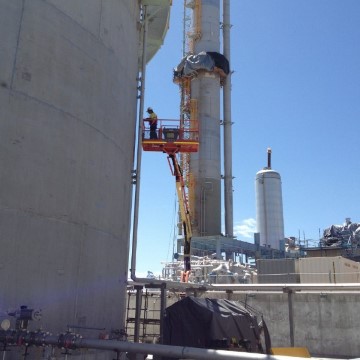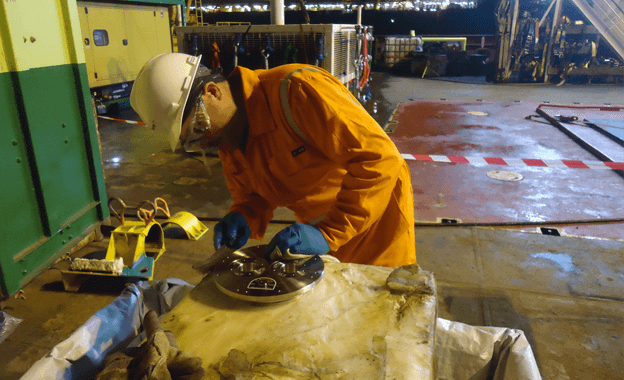Our team attended the subsea stainless steel Motion Record unit assemblies for a Floating Storage & Production Offtake (FPSO), based offshore Angola. The treatment carried out used pickling paste, cleaner and passivator as well as mechanical abrasion to remove corrosion on the subsea canisters. The work was carried out as per standard ASTM A967.
Onsite Treatment Services
Western Australia's corrosion treatment professionals for stainless steel cleaning, pickling, and passivation. No job is too big or remote, call us to discuss the best option for your project.
Offshore TREATMENTS
Oil and gas platforms and other offshore facilities are no problem for our experienced team.
Scheduled Maintenance
Surface deposits, contamination and corrosion must be prevented to prolong the life and integrity of stainless steel.
Choosing the correct maintenance schedule for stainless steel, and a prompt response to any stains or discolouration can aid in the prevention of serious problems with stainless steel.
It is important to note that simply wiping with a damp cloth will smear corrosive deposits without removing them, therefore it is important to use the correct chemicals and techniques. Typically, more aggressive environments (such as marine equipment) prove more difficult for stainless steel to resist without the correct cleaning and maintenance.
Call us to discuss a plan to prolong the life of your assets.
It is important to note that simply wiping with a damp cloth will smear corrosive deposits without removing them, therefore it is important to use the correct chemicals and techniques. Typically, more aggressive environments (such as marine equipment) prove more difficult for stainless steel to resist without the correct cleaning and maintenance.
Call us to discuss a plan to prolong the life of your assets.
Our Expertise
Identify the type of treatment required and develop a scope of works.
Develop site-specific treatment operating procedures in compliance with the standards.
Develop and implement health and safety procedures (risk assessments included)
Implement ongoing corrosion maintenance programs to maintain the integrity of stainless steel structures
Bunding and waste capture process for collection and offsite disposal.
Quality control of treatment (which can incorporate the use of the Forroxyl test as a means of ensuring the stainless steel is free from iron contamination).
Common signs of corrosion
Stainless steel is an ideal material for many uses, including structures, industrial equipment and commercial plants. Steel is a common choice due to its strength, and stainless steel’s excellent corrosion and staining resistance is ideal for these applications all over the world.
However, stainless steel can be susceptible to localised corrosion, or uniform corrosion if exposed to basic or acidic solutions. Some corrosion can be difficult to predict and protecting stainless steel with the proper maintenance is critical to keep the integrity of your structures or equipment.
Depending on the environment in which stainless steel is used, surface deposits can cause staining and discolouring. The correct grade, finish, maintenance and cleaning schedules are required to maintain stainless steel’s best performance.
However, stainless steel can be susceptible to localised corrosion, or uniform corrosion if exposed to basic or acidic solutions. Some corrosion can be difficult to predict and protecting stainless steel with the proper maintenance is critical to keep the integrity of your structures or equipment.
Depending on the environment in which stainless steel is used, surface deposits can cause staining and discolouring. The correct grade, finish, maintenance and cleaning schedules are required to maintain stainless steel’s best performance.
Pitting Corrosion
Pitting is a form of corrosion which is often readily visible to the naked eye and is a symptom of the chromium-rich passive oxide film on tubing breaking down due to exposure in a chloride-rich environment. A higher chloride concentration or increased temperature likely to result in the passive film breaking down. Pitting is not only unsightly, it can eventually cause a situation where tubing could fail. Without the passive film intact to protect the steel, pitting and perforation can occur. While pitting will initially form in the shape of shallow pits, continued lack of proper maintenance will see the corrosion develop to deep and even connected pits.
Crevice Corrosion
Crevice corrosion can be extremely difficult to avoid in tubing. Tight crevices are the biggest risk to steel, with corrosion causing the oxygen concentration in the fluid within to drop. This lower oxygen concentration increases the likelihood of the passive surface oxide film breaking down, resulting in a shallow pit.
SERVICE ENQUIRY FORM
"*" indicates required fields
 ICS will be closed for the Christmas and New Year period from 12pm, 22 Dec - 9 Jan 2023
ICS will be closed for the Christmas and New Year period from 12pm, 22 Dec - 9 Jan 2023


